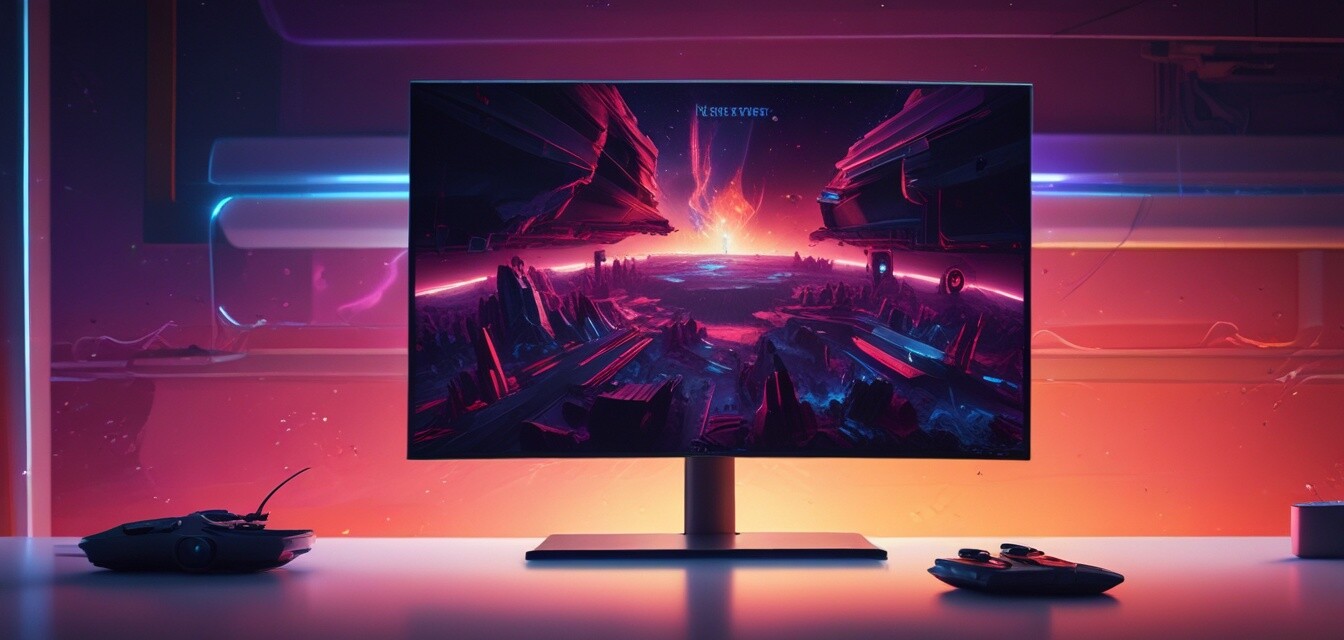
The Impact of OLED on Competitive Game Design
- OLED technology enhances visual clarity, contrast, and color precision in gaming.
- Competitive game design benefits from faster response times and reduced motion blur.
- Developers are increasingly leveraging OLED capabilities for innovative gameplay mechanics.
- As OLED monitors become more accessible, the competitive gaming scene is evolving.
In recent years, OLED (Organic Light Emitting Diode) technology has profoundly changed the landscape of competitive gaming. By offering superior visual quality and responsiveness, OLED has become a focal point in game design. This article explores how OLED technology influences competitive game design, enhancing both visual experiences and gameplay mechanics.
What is OLED technology?
OLED technology utilizes organic materials to produce light when electricity is applied. Unlike traditional LCD displays, which require a backlight, OLED displays generate their light, producing deeper blacks and more vibrant colors. This technology not only enhances the visual fidelity of games but also opens up new opportunities for developers.
Enhancing visual experiences in competitive gaming
Superior contrast and color accuracy
One of the most notable advantages of OLED technology is its ability to deliver exceptional contrast ratios and color accuracy. This is particularly important in competitive gaming, where every detail can impact gameplay.
| Feature | OLED | LCD |
|---|---|---|
| Black levels | True black | Grayish-black |
| Color gamut | Wider | Narrower |
| Response time | Fast | Slower |
Minimizing motion blur
With quicker response times, OLED monitors significantly reduce motion blur, providing smoother visuals during fast-paced gameplay. This feature allows players to react more swiftly and accurately, creating a more engaging competitive environment.
Innovations inspired by OLED technology
The advancements in OLED technology have encouraged game developers to rethink their designs and mechanics:
- Dynamic visual effects: With the rich color capabilities of OLED, developers can create layers of visuals that respond dynamically to gameplay.
- Immersive environments: Enhanced depth of field achieved through OLED can create a more immersive gaming experience.
- Real-time lighting: OLED's ability to handle complex lighting scenarios allows developers to introduce realistic effects and shadows.
The future of OLED in competitive gaming
As OLED technology becomes more prevalent, we can expect significant changes in the competitive gaming ecosystem. The accessibility of OLED monitors will enable more gamers to experience enhanced visual settings, leveling the playing field.
Predictions for game design
We foresee several trends evolving:
- Incorporation of augmented reality (AR) features that leverage OLED displays.
- Further development of high refresh rates for crisp visuals in fast-paced games.
- Innovative graphics engines specifically optimized for OLED technology.
Conclusion
In conclusion, OLED technology plays a crucial role in shaping the future of competitive game design. With its superior color accuracy, contrast, and quick response times, it provides an unparalleled visual experience that redefines how games are developed and played. As we move forward, embracing these advancements will be fundamental for both developers and gamers alike.
Pros
- Exceptional visual fidelity
- Faster response times reduce motion blur
- Increased engagement due to dynamic visuals
Cons
- Higher cost compared to traditional displays
- Potential for burn-in issues
- Limited availability in budget models
Further reading
To dive deeper into the influence of OLED technology, check out our other articles: